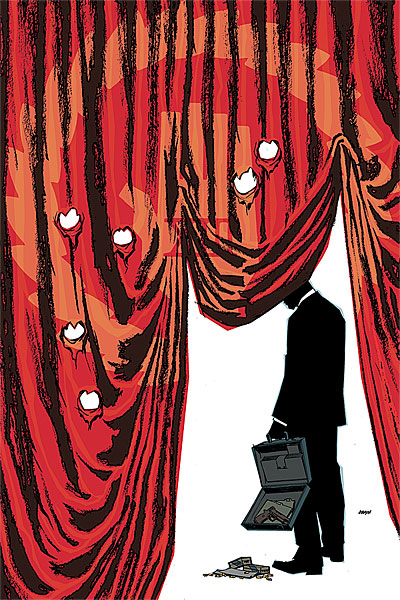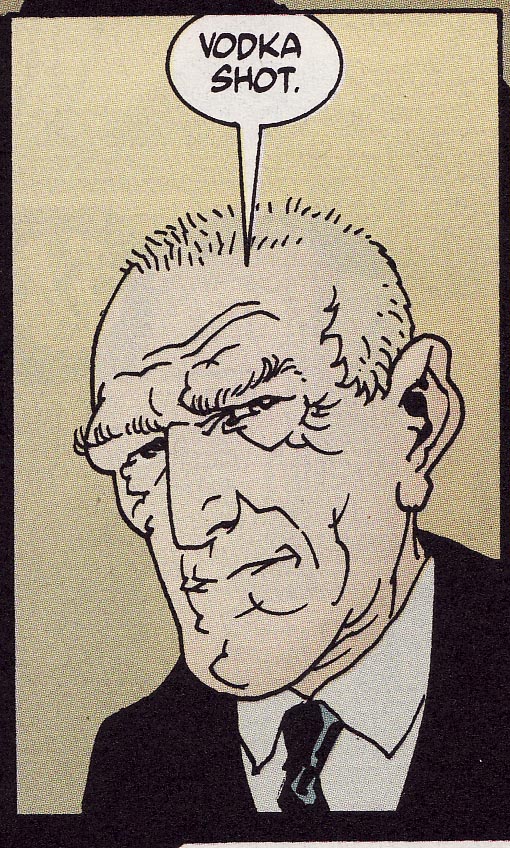Does VERTIGO CRIME Pay?
/One of the things I like about DC Comics—er, make that DC Entertainment—is their willingness to try out new imprints and formats, like the Minx line. Unfortunately, they don’t always keep said imprints and formats around long enough to let them find an audience…like the Minx line. A few weeks back, the company launched one of these new imprints, Vertigo Crime, by releasing its first two books—Filthy Rich and Dark Entries—on the same day (a bit of an odd move, if you ask me). How do its chances of survival look when stacked up against, oh, I don’t know, the Minx line? Well, let’s have a look.

Filthy Rich, by Brian Azzarello and Victor Santos, follows a not-very-good car salesman named Rich Junkin (get it?) with a shady past. Junk, as he is affectionately known, is eventually let go from his sales position, only to be re-hired as a chaperone for his boss’s spoiled party-brat of a daughter. Junk quickly becomes a fixture in her entourage, but before long, somebody ends up dead. As with Azzarello’s prior work in books like 100 Bullets and Joker, practically every character is a total sleaze, and most of them inevitably get what’s coming to them. It wouldn’t take much to make Junk’s story into a 100 Bullets arc, just Eduardo Risso on the art and a suitcase full of ammo. Santos’ art recalls Frank Miller’s work on Sin City, but he’s still working the kinks out—in some panels, it’s pretty tough to figure out what’s happening, and many of his characters look like they’re about four feet tall. Still, you can track his progress over the course of the book, and he improves considerably by the end. I’d be curious to see what his next project looks like.

Dark Entries is a bit more perplexing. It’s labeled A John Constantine Novel, but it’s really what those of us in the comics-selling biz usually just call A Hellblazer Graphic Novel. Only this time, it’s written by best-selling mystery novelist Ian Rankin, so I guess they’re after a different crowd. British con-man/working-class magician/supernatural detective John Constantine is asked to investigate a Big Brother-style reality TV show where a group of contestants live in a phony haunted house. Turns out, though, the contestants are being haunted for real, before the phony hauntings have had a chance to begin. Constantine agrees to enter the house, but by the halfway point, he learns the show’s hellish secret, and Dark Entries becomes a very different kind of book—not really a mystery or crime novel at all, in fact. Rankin has a pretty solid grasp of Constantine’s character, and the plot did keep me guessing for awhile (even though the reality TV setting is getting pretty tired at this point). Like Victor Santos on Filthy Rich, the art by Werther Dell’edera starts out kind of bland but gets a lot better—somewhat reminiscent of Guy Davis, actually—right around the time of the story’s Big Twist. Although, can anyone tell me if the scar he draws on Constantine's face is a recent development in the ongoing series? I don't remember when that happened, although to be fair, I haven't read it in a while.
Vertigo Crime is a tough sell, for a couple of reasons. First, these compact hardcovers (sporting cool Lee Bermejo covers, by the way) cost $19.99 US each, which might not be such a big deal if they weren’t black and white. I guess the art is supposed to evoke more of a noir feel, but c’mon—for about five bucks less, you can buy a Criminal trade paperback, and it’d be in colour! Also, the inclusion of Dark Entries throws the whole thing's sense of purpose out of whack a bit, since it’s not really a crime novel, per se. Yeah, it’s a mystery of sorts, but not so much more so than any other Hellblazer story arc (I wouldn’t be terribly surprised to see this book coloured one day and re-released as Hellblazer: Dark Entries—I suspect it would sell better). The reason for its inclusion is pretty clearly Ian Rankin’s involvement; Vertigo Crime is definitely a writer-driven imprint, hence the giant names of the writers on the covers and the By The Author Of... above or beneath them. I guess the idea here is that this line is intended to make a splash in the bookstore market, more so than in comic stores. However, a crime novel enthusiast would probably be more used to spending significantly less on a paperback, and a mystery fan would happily plunk down a few dollars more on a hardcover prose novel, and both of them would have something to read for a lot longer than either of these books would take them. None of this is meant to imply that either Filthy Rich or Dark Entries is a bad read, by the way. There are plenty of reasons to recommend either of them to any number of readers, whether they enjoy the creators or the genre or John Constantine. I’m just not sure this line has enough of its own identity yet to merit a line of its own.








